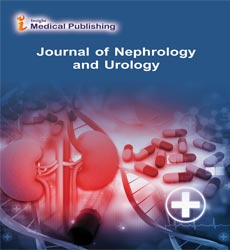Managing anemia in patients with CKD with stimulating agents
Abstract
In any individual, anemia may be the initial laboratory sign of an underlying medical problem. Consequently, a complete blood count, including the hemoglobin (Hb) concentration, is routinely part of global health assessment in most adults, whether or not they have chronic kidney disease (CKD). In patients with CKD but stable kidney function, the appearance or progression of anemia may herald a new problem that is causing blood loss or is interfering with red cell production. The anemia should be evaluated independently of CKD stage in order to identify any reversible process contributing to the anemia. Its presence carries higher complication rates, increased morbidity and mortality. It is associated with: Left ventricular dysfunction, Heart failure, Reduction in exercise capacity, Poor quality of life. It is a multi-factorial in a etiology, primarily caused by deficiency of erythropoietin and iron, but other factors also play a role in its pathogenesis like: patient factors, inter-current clinical events and practice patterns. The most commonly encountered reversible cause of chronic anemia or worsening anemia in CKD patients, other than anemia related directly to CKD, is iron deficiency anemia. The use of iron therapies and erythropoiesis stimulating agents (ESAs) has allowed improvement in patients with anemia of CKD.
Open Access Journals
- Aquaculture & Veterinary Science
- Chemistry & Chemical Sciences
- Clinical Sciences
- Engineering
- General Science
- Genetics & Molecular Biology
- Health Care & Nursing
- Immunology & Microbiology
- Materials Science
- Mathematics & Physics
- Medical Sciences
- Neurology & Psychiatry
- Oncology & Cancer Science
- Pharmaceutical Sciences
